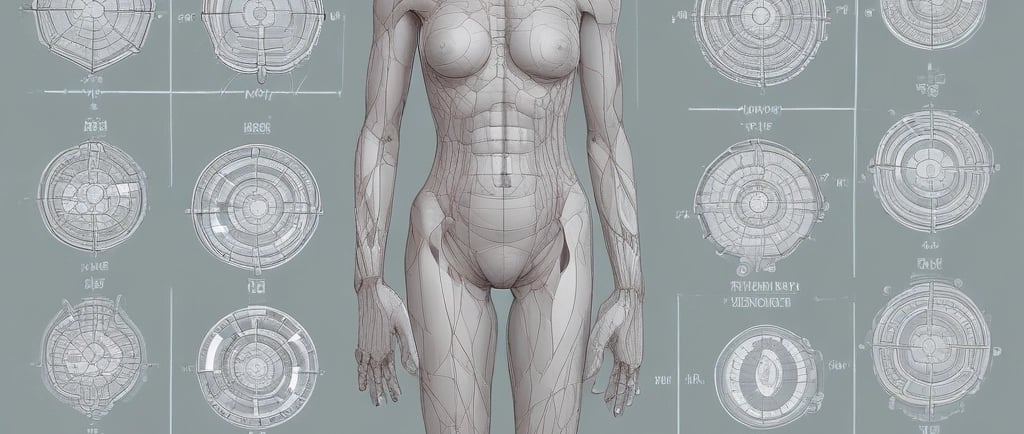Periodic Health Assessment (Free! Questionnaire & Tool)
Use our health assessment tool to check BMI, body fat, BP & more. Get personalized results & actionable tips for better wellness!


Comprehensive Health Assessment: Understand Your Vital Metrics
In today's fast-paced world, monitoring your health regularly is more important than ever. Our Periodic Health Assessment Tool is designed to help you evaluate key health metrics, understand potential risks, and receive personalized recommendations.
This article will explain:
Key Health Terms – What they mean and why they matter
How the Calculator Works – Inputs, calculations, and outputs
Understanding Your Results – What your numbers indicate
Actionable Recommendations – Steps to improve your health
1. Key Health Metrics & Their Importance
A. Body Mass Index (BMI)
What it is: A measure of body fat based on height and weight.
Why it matters:
Underweight (BMI < 18.5): May indicate malnutrition or other health issues.
Normal (18.5–24.9): Healthy weight range.
Overweight (25–29.9): Increased risk of heart disease, diabetes.
Obese (≥30): High risk of chronic diseases.
Limitations: Doesn’t distinguish between muscle and fat (athletes may have high BMI without excess fat).
B. Body Fat Percentage
What it is: The proportion of fat in your body.
Why it matters:
Men: Healthy range is 8–19% (athletes) to 20–24% (acceptable).
Women: Healthy range is 21–33% (varies by age).
High body fat increases diabetes, heart disease risk.
Very low body fat can harm hormone function.
C. Waist-to-Height Ratio (WHtR)
What it is: Waist circumference divided by height.
Why it matters:
Ideal: Below 0.5 (waist less than half your height).
Above 0.5: Higher risk of metabolic diseases.
Better than BMI for assessing abdominal fat (a major health risk).
D. Blood Pressure (BP)
What it is: Force of blood against artery walls (systolic/diastolic).
Why it matters:
CategorySystolic (mmHg)Diastolic (mmHg)Normal<120<80Elevated120–129<80Hypertension Stage 1130–13980–89Hypertension Stage 2≥140≥90
High BP increases stroke, heart attack risk.
E. Resting Heart Rate (RHR)
What it is: Heartbeats per minute (bpm) at rest.
Why it matters:
Normal: 60–100 bpm (athletes may have 40–60 bpm).
High RHR (>100): May indicate stress, dehydration, or heart issues.
Low RHR (<60): Could be normal for athletes or a sign of bradycardia.
F. Blood Oxygen (SpO₂)
What it is: Oxygen saturation in blood (%).
Why it matters:
Normal: 95–100%
Below 90%: Requires medical attention (possible lung/heart issues).
G. Body Temperature
What it is: Internal body heat (°C or °F).
Why it matters:
Normal: 36.1–37.2°C (97–99°F)
Fever: >38°C (100.4°F) – Possible infection.
Low (<36°C): Hypothermia risk.
2. How the Health Assessment Calculator Works
Step 1: Enter Your Details
The calculator has four tabs:
Basic Information (Age, gender, height, weight)
Vital Signs (BP, heart rate, oxygen, temperature)
Lifestyle (Activity, smoking, alcohol, sleep, stress)
Medical History (Family & personal health conditions)
Step 2: Automatic Calculations
BMI & Body Fat % – Derived from height and weight.
WHtR – Calculated if waist measurement is provided.
Cardiovascular & Metabolic Risk Scores – Based on BP, BMI, lifestyle, and medical history.
Lifestyle Score – Rates your habits (exercise, sleep, stress).
Step 3: Get Your Results
Color-coded risk indicators (Green = Low, Yellow = Moderate, Red = High).
Personalized recommendations (Diet, exercise, medical advice).
3. Understanding Your Results
A. Body Composition Analysis
BMI & Body Fat %:
If high, focus on balanced diet & exercise.
If low, check for nutritional deficiencies.
Waist-to-Height Ratio:
>0.5? Reduce belly fat via cardio & core exercises.
B. Vital Signs Assessment
High BP? Reduce salt, exercise, monitor regularly.
Low Oxygen? Check for lung issues if consistently <90%.
High Stress? Try meditation, deep breathing, better sleep.
C. Risk Indicators
Cardiovascular Risk:
High? Consult a doctor, improve diet, exercise.
Metabolic Risk:
High? Check blood sugar, cholesterol levels.
D. Lifestyle Score
<5/10? Improve sleep, reduce alcohol, increase activity.
8+/10? Great job—maintain healthy habits!
4. Actionable Health Recommendations
✅ If Overweight:
Eat more fiber, protein, and healthy fats.
Walk 10,000+ steps daily.
Reduce sugary drinks & processed foods.
✅ If High BP:
Limit salt intake (<2,300mg/day).
Try DASH diet (rich in veggies, whole grains).
Monitor BP weekly.
✅ If Sedentary Lifestyle:
Start with 30-min walks, 5x/week.
Try strength training 2x/week.
✅ If Poor Sleep/High Stress:
Sleep 7–9 hours nightly.
Practice mindfulness (meditation, yoga).
Final Thoughts
This Health Assessment Tool gives you a quick, science-backed snapshot of your health. While it’s not a substitute for medical advice, it helps you track trends and make informed lifestyle changes.
Try it now, assess your health, and take control of your well-being!
🔹 Pro Tip: Recheck every 3–6 months to track progress!
Read More:
Explore our extensive range of health calculators.
For Appointments
Get Health insights & OFFERS
support@doseway.com
0318 - 6144650
© 2025. All rights reserved.
